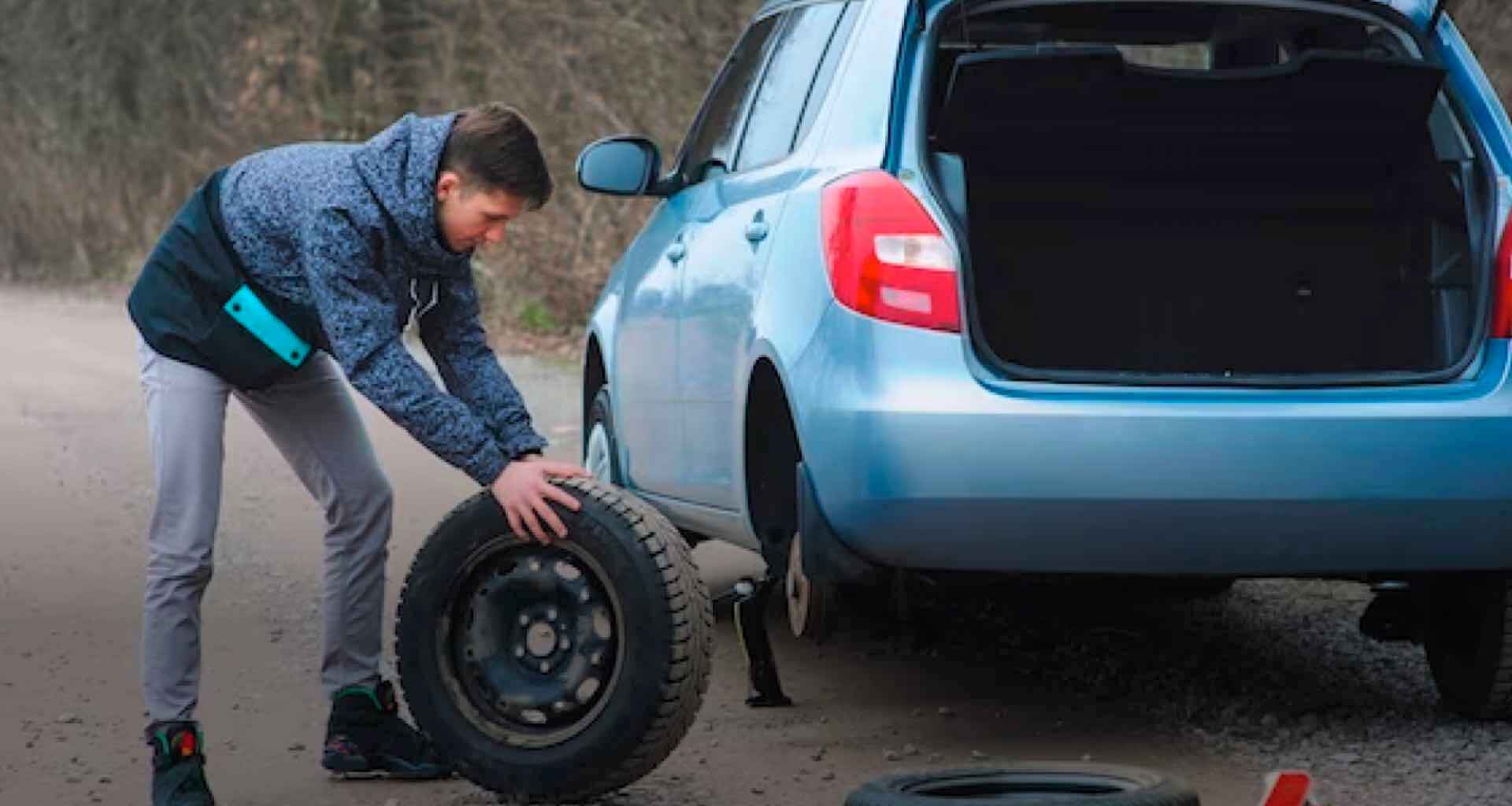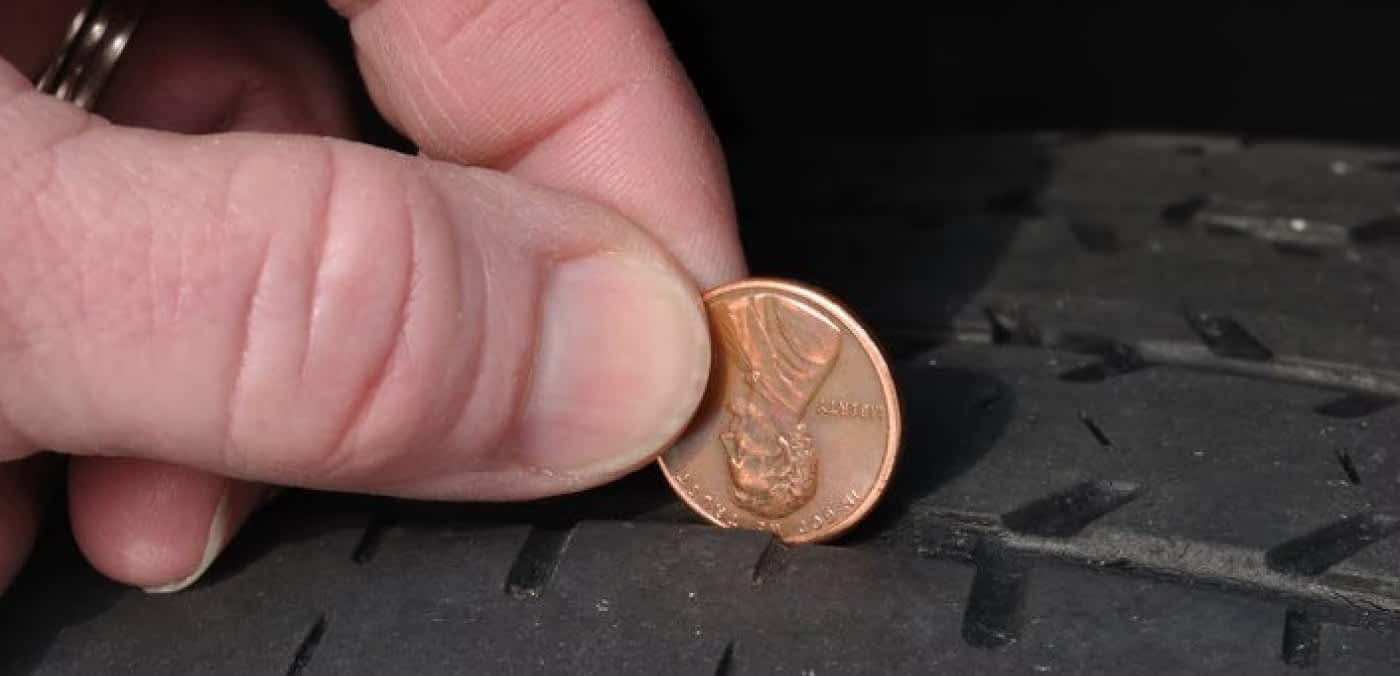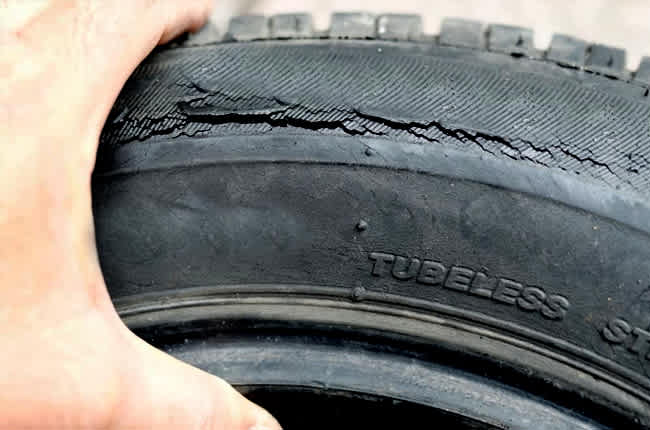Tire Maintenance & Safety
Best price guarantee
Tire replacement coverage
24/7 roadside assistance
Easy returns

Tires are the only point of contact between your vehicle and the road - making them a highly critical component for your safety and performance. As tires wear down with age, their effectiveness is reduced, putting your safety at risk. In such cases, knowing when to replace your tires becomes far more important as you drive in optimal driving conditions and prevent accidents.
Proper tire maintenance involves regularly inspecting your tires for signs of wear and damage. By understanding the key indicators that signal the need for replacement, you can ensure your vehicle remains safe and reliable. Let’s get to know the five primary signs that signal it's time to invest in a new set of tires.
While it may be tempting to delay tire replacement to save money, doing so can compromise your safety and lead to more expensive repairs. Tires are designed to provide traction, stability, and comfort, but these qualities diminish as the tires age and wear down. By staying informed and proactive about tire maintenance, you can make the best decisions for your vehicle and your wallet.
When to Replace Your Tires
Being a vital aspect of your vehicle's safety and performance, tires provide the necessary traction, handling, and stability to navigate various road conditions. However, tires have a limited lifespan and will eventually need to be replaced. If you know when to replace your tires, you’ll not only be able to continue your journey without any hiccups but also prevent potential risks.
Several factors contribute to tire wear, including driving habits, road conditions, and climate. As tires age and accumulate mileage, their tread depth diminishes, reducing their ability to grip the road effectively. This can lead to longer stopping distances, delayed steering response, and an increased risk of hydroplaning on wet surfaces.
Regularly monitoring your tires' condition is essential for identifying when they need to be replaced. By conducting periodic inspections and understanding the key indicators of tire wear, you can ensure your vehicle remains safe and reliable. Remember, investing in new tires (when required) is not only a matter of convenience but also a critical aspect of responsible vehicle ownership.
Click here to learn the best practices for safe driving
How to Identify Tire Replacement Indicators
To ensure the right time for tire replacement, you need to inspect tires routinely. By being attentive to your tires' condition, you can preemptively address potential issues that may affect road safety and vehicle performance, which involves checking for specific signs that suggest wear or damage, allowing you to keep your vehicle in top shape.
- Tread Depth: The most common and effective method of tire evaluation is checking tread depth. Use a tread depth gauge or the penny test to determine whether your tires have adequate tread for safe driving. Treads measuring below 2/32 inches indicate that it's time to invest in new tires.
- Visible Damage: Another essential step is to identify visible damage. Look for cracks, bulges, or punctures that can weaken the tire's structure and increase the risk of blowouts. Check the sidewalls and tread surface carefully for any such signs of wear.
- Uneven Wear: Uneven tire wear can signal alignment or suspension issues, potentially leading to compromised handling. While regular tire rotation can help balance wear patterns, it's important to address any underlying mechanical problems that may cause uneven wear.
By focusing on these indicators, you ensure your vehicle remains in optimal condition for safe and efficient travel.
Indicator 1: Tread Depth Measurement

Tread depth plays a crucial role in tire safety and performance. Using a tread depth gauge allows for accurate measurement of the remaining tread. This tool provides a straightforward way to monitor tire condition, ensuring that the tread does not fall below the safe limit. Regular assessments help prevent unsafe driving conditions, especially in wet or slippery scenarios.
Alternatively, the penny test serves as a quick method to gauge tread depth. Place a penny into the tread grooves with Lincoln's head facing downward. If the tread covers any part of Lincoln's head, your tires are in good shape. However, if you see the full head, consider planning for new tires. This simple test offers a convenient way to keep track of your tire's tread.
Proper tread depth is essential for maintaining effective traction and control. Tires with adequate tread effectively channel water away, reducing hydroplaning risks and improving stopping power. Regular tread checks enable drivers to address wear issues promptly, enhancing both safety and driving comfort.
Indicator 2: Visible Tire Damage

To maintain your vehicle safety, it’s advised to keep a check on any physical damage to your tire. Regular evaluations help detect issues that might not be immediately apparent but could escalate into major problems. Closely watch each tire for signs of blistering or bubbles, which suggest that the internal fabric has degraded. Such defects can develop from over-inflation or striking a severe road hazard, signaling a need for immediate replacement.
Sidewall conditions provide crucial insights into tire health. Abrasions or gouges on the sidewall may indicate that the tire has encountered sharp objects or curbs, affecting its strength and reliability. These flaws can compromise the tire's ability to withstand pressure, increasing the likelihood of a rupture.
Foreign objects lodged in the tread or sidewall, such as shards of metal or stones, can create pathways for air leaks. While certain minor tread punctures may be repairable, significant sidewall breaches necessitate a complete tire change. Regularly removing debris and inspecting for such damages ensures your tires remain dependable and safe for every journey.
Indicator 3: Uneven Tire Wear
Irregular tire wear often suggests deeper mechanical issues. Tires that show uneven patterns, such as one side wearing faster than the other, may indicate problems like misaligned wheels or faulty suspension components. These inconsistencies can result in reduced vehicle stability and compromised control. A professional inspection can identify and address these mechanical discrepancies, ensuring your tires maintain optimal road contact.
Consistent tire rotation plays a key role in achieving a balanced wear pattern across all tires. By moving tires to different positions, as per the manufacturer's recommended pattern, you can counteract the effects of weight distribution and driving habits that naturally lead to uneven wear. This practice not only extends tire life but also supports uniform handling characteristics.
Specific wear patterns like feathering or cupping can provide insights into particular mechanical issues. Feathering, where tread edges become rounded on one side and sharp on the other, can result from improper toe alignment. Cupping, which appears as dips around the tread, may point to suspension irregularities. Early detection and correction of these patterns ensure a smoother, safer driving experience.
Want to reduce tire wear? Dive here
Indicator 4: Tire Age
Tire age holds significant importance in assessing when replacements are necessary, regardless of tread condition. Exposure to environmental elements over time causes tire materials to deteriorate, impacting their durability and reliability. This natural aging process can compromise tire safety even if the tread appears sufficient, necessitating age consideration in your maintenance approach. The interaction of rubber compounds with oxygen and other atmospheric elements leads to a gradual decline in tire strength.
Search the Department of Transportation (DOT) code on your tire's sidewall to find the manufacturing date. The final four digits of this code reveal the week and year the tire was rolled out. For instance, a tire with a DOT code ending in 2319 was manufactured during the 23rd week of 2019. Regularly monitoring this code keeps you informed about the tire's age, allowing for timely replacement planning.
Experts generally advocate for tire replacement every six to ten years, irrespective of the tread's appearance. This recommendation helps avoid the hazards associated with aging tire materials, such as reduced grip and increased likelihood of failure. While a tire may look fine externally, this timeframe accounts for internal factors affecting performance and safety. Taking note of manufacturing dates and regular checks ensures continued road safety.
Indicator 5: Poor Handling or Vibration
Another major aspect that signals tire issues is sudden changes in vehicle handling or the onset of vibrations. Such changes might present as a trembling steering wheel or reduced vehicle control, especially noticeable when navigating curves or making turns. These indications often arise from concerns like tire imbalance or internal damage, which can compromise the vehicle's stability. Timely addressing of these issues is essential to maintain safe driving conditions.
You should seek the expert advice of professionals to fix these issues, as they might also result from more complex issues beyond the tires themselves. Internal tire damage, such as a shifted belt or a defect in the tire’s structure, can cause vibrations and affect handling. This situation demands immediate attention, as it may escalate to tire failure if left unaddressed. A thorough examination by a skilled technician can pinpoint the precise cause and suggest the necessary corrective measures, whether involving tire replacement or adjustments to the vehicle's suspension system.
If you fail to address these symptoms timely, it could lead to further complications, impacting the vehicle’s overall performance and fuel efficiency. Continuous vibrations can accelerate the wear of suspension components, leading to costly repairs. Addressing these handling and vibration concerns promptly not only enhances driving comfort but also preserves the longevity of tires and vehicle parts, ensuring a safe and efficient driving experience.
Final Thoughts
Regularly assessing your car’s tires is important to maintain a safe and efficient vehicle. Keeping track of tire condition allows you to address potential issues before they escalate, ensuring that your vehicle remains dependable on the road. This proactive approach minimizes the risk of unexpected breakdowns and enhances overall driving confidence.
Being informed about key indicators like tread wear, surface damage, and tire age, you can make proactive decisions about replacements. Early detection of these signs helps you avoid the pitfalls associated with worn tires, such as limiting handling capabilities and compromised safety. This knowledge empowers you to maintain your vehicle's reliability and extend its longevity effectively.
Periodic tire maintenance not only supports safety but also enhances fuel economy and driving comfort. While keeping tires in their best condition contributes to a smoother ride and optimal vehicle performance, the commitment to regular upkeep ensures a more satisfying and worry-free driving experience.
Being informed about your tires' condition is essential for a safe and enjoyable driving experience. By understanding these key indicators, you can make informed decisions about when to replace your tires, ensuring optimal performance and peace of mind on the road. When you're ready to shop for new tires, we at SimpleTire are here to help you find the best deals and make the process as simple as possible.
A tire replacement could generally take anywhere from 45 minutes to 1 hour. It is advisable to go to an expert to get your tires replaced, however, if you are replacing the tires on your own, it can take anywhere from 1 hour to 2 hours.
You can replace your tires at a professional shop or at home. SimpleTire has thousands of tire shops all over the country to help you with your tire needs. You can shop for your tires at SimpleTire and get them delivered to the shop of your preference to get your tires replaced.
Ready to find the perfect tires?
Search By